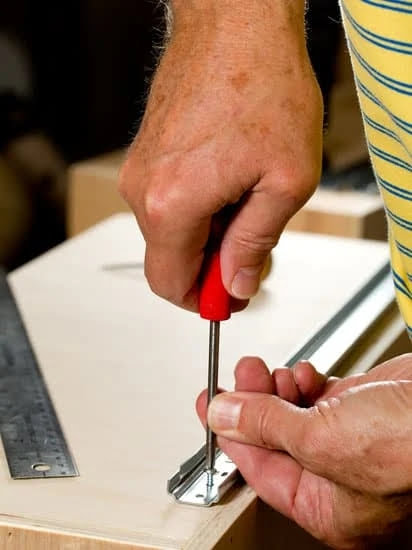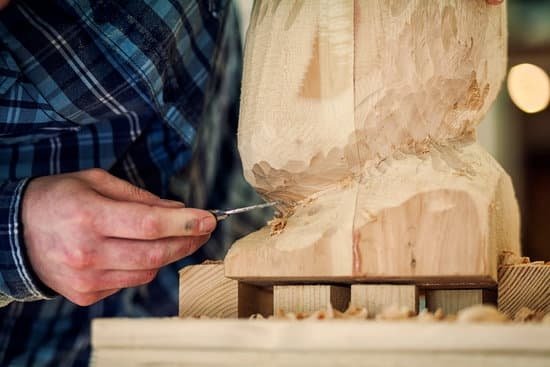Wood is a fundamental material in woodworking projects, and its storage plays a critical role in the success of those projects. Improper wood storage can lead to a range of negative effects such as warping, shrinkage, and compromised structural integrity. To ensure the wood remains in optimal condition, it is crucial to understand the importance of properly storing it.
Properly storing wood is essential because it helps maintain its quality and usability over time. When wood is exposed to fluctuating temperatures and humidity levels, it can result in warping or shrinking. This can render the wood unusable or require additional effort to correct these issues before starting a project. By implementing appropriate storage techniques, woodworkers can prevent these problems and save both time and money.
Moreover, improper storage conditions can also contribute to deterioration due to exposure to sunlight or various water sources. Direct sunlight can cause fading or discoloration, while excessive moisture can lead to mold growth or rotting. Protecting the wood from these elements by storing it appropriately ensures that it remains structurally sound and visually appealing for future woodworking endeavors.
In this article, we will explore the ideal conditions for wood storage, effective storage area selection within a workshop or garage, preparatory steps for storing wood, protective coatings for wood preservation, managing wood movement during storage, regular maintenance and inspection tasks for stored wood, best practices for retrieving and using stored wood, as well as offer practical tips on acclimatizing stored wood before use.
By following the strategies outlined here, you will master the art of proper wood storage and set yourself up for successful woodworking projects in the future.
Understanding the Ideal Conditions for Wood Storage
Wood is a naturally porous material that is extremely sensitive to changes in temperature and humidity. Therefore, understanding the ideal conditions for wood storage is crucial in maintaining its quality and preventing issues like warping and shrinkage.
The optimal temperature for storing wood is between 40-60 degrees Fahrenheit (4-15 degrees Celsius), while the recommended humidity level should be around 35-55%. Fluctuations in these conditions can lead to wood movement, which can cause structural problems in woodworking projects. It’s essential to avoid exposing stored wood to extreme temperatures or high humidity levels, as this can result in damage.
Additionally, it’s important to keep wood away from direct sunlight and water sources. Direct sunlight can cause discoloration and fading of the wood, while exposure to water or moisture can lead to mold growth and rotting. Storing wood in a dry area away from windows or doors will help maintain its integrity.
To effectively store wood, it’s crucial to choose the right storage area within a workshop or garage. The storage location should be free from pests such as termites or wood-boring insects, as they can cause significant damage to untreated wood. Using racks or shelving systems off the ground helps protect against pest infestations while allowing for proper airflow.
Choosing the Right Storage Area for Wood
When it comes to properly storing wood for woodworking projects, selecting the right storage area is crucial. The storage location within a workshop or garage can greatly impact the quality and usability of the wood. Here are some important considerations to keep in mind when choosing the right storage area for wood:
Protection from Pests:
One of the key factors in choosing a storage area for wood is protecting it from pests. Termites and wood-boring insects can cause significant damage to stored wood, rendering it unusable for future projects. It is important to select a storage location that is well-sealed and free from any cracks or openings that pests may enter through. Regular inspection and maintenance will also help identify any signs of infestation early on.
Elevated Storage:
Storing wood off the ground is essential for preventing moisture absorption and minimizing the risk of decay or warping. By using racks or shelving systems, you can elevate your wood off the ground and allow proper airflow around each piece. This not only helps maintain the integrity of the wood but also makes it easier to organize and access different pieces when needed.
Proximity to Workspace:
Ideally, your chosen storage area should be located near your workspace so that retrieving and using stored wood becomes convenient. Having easy access to your stored wood will save you time and effort during woodworking projects, as you won’t have to navigate through obstacles or move heavy materials from one place to another.
| Consideration | Recommendation |
|---|---|
| Protection from Pests | Select a storage location that is well-sealed and free from cracks or openings. |
| Elevated Storage | Use racks or shelving systems to store wood off the ground and allow airflow. |
| Proximity to Workspace | Choose a storage area that is near your workspace for easy access. |
Taking these factors into account when choosing the right storage area for wood will help ensure that your materials remain in optimal condition. By protecting wood from pests, elevating it off the ground, and keeping it conveniently located near your workspace, you are setting yourself up for woodworking success.
Preparing Wood for Storage
Properly preparing wood before storage is crucial to ensure its longevity and usability for future woodworking projects. Before placing wood in storage, it is essential to inspect and prepare it adequately. This involves taking certain steps to ensure the wood remains in optimal condition while stored.
The first step in preparing wood for storage is to clean its surface. Remove any dirt, debris, or excess moisture from the wood using a soft brush or cloth. This will help prevent mold growth or damage while the wood is in storage. It is also important to ensure that the wood is completely dry before storing it, as moisture can lead to warping or decay over time.
After cleaning the wood, it is advisable to stack and organize it properly based on size, type, and moisture content. Stacking the wood neatly will help maximize space utilization while preventing damage such as bending or breaking. Consider using spacers or stickers between each layer of stacked wood to allow for airflow and minimize the risk of trapping moisture.
In addition to stacking, labeling each piece of wood can be beneficial when retrieving specific pieces later on. Labeling with information such as the type of wood and its intended use can save time and effort during future projects. By taking these steps to prepare wood before storage, you can ensure that your materials remain in excellent condition and ready for use whenever needed.
Utilizing Protective Coatings for Wood Preservation
One crucial aspect of properly storing wood for woodworking projects is protecting the wood’s integrity and durability through the application of protective coatings. These coatings serve as a barrier against moisture absorption, preventing warping, rotting, and other forms of damage that can occur over time. By utilizing protective coatings, woodworkers can ensure that their stored wood remains in optimal condition for future use.
There are various types of protective coatings available, each with its own benefits and recommended uses. One popular option is the use of sealants or wood oils. These coatings penetrate the wood surface and create a protective layer that prevents moisture from entering while allowing the wood to breathe. This is particularly beneficial for solid wood pieces or outdoor furniture that are exposed to environmental elements.
For more decorative or indoor woodworking projects, applying varnishes or lacquers can provide an additional layer of protection to enhance the wood’s appearance and durability. Varnishes form a hard shell on the surface of the wood, providing resistance to scratches and abrasion. Lacquers, on the other hand, create a glossy finish and offer excellent protection against water damage.
When selecting a protective coating for your stored wood, consider factors such as the intended use of the wood and its exposure to moisture or UV rays. Additionally, be sure to follow manufacturer instructions regarding application methods, drying times, and any necessary safety precautions.
By incorporating protective coatings into your wood storage practices, you can significantly extend the lifespan of your stored wood while maintaining its quality for future woodworking projects. Regularly inspect and maintain these coatings as part of your routine maintenance tasks to ensure long-lasting protection against environmental factors.
Managing Wood Movement during Storage
Wood is a natural material that naturally expands and contracts in response to changes in temperature and humidity levels. This movement is known as wood movement, and it can have negative effects on stored wood if not properly managed. In this section, we will discuss the importance of managing wood movement during storage and provide some strategies for mitigating its potential negative effects.
One effective technique for managing wood movement during storage is to use spacers or stickers between wood planks. Spacers or stickers are thin strips of wood that are placed between each layer of stacked wood. These spacers allow for airflow around the wood, which helps to equalize moisture content and minimize warping or distortion.
When using spacers or stickers, it is important to ensure they are made from a stable, non-reactive species of wood. A common choice for spacers is kiln-dried softwood, such as pine or fir. It is also crucial to space the stickers evenly along the length and width of the wood planks to provide adequate support.
Another strategy for managing wood movement during storage is to stack the wood with alternating growth rings facing up. This technique helps balance the forces exerted by the expanding and contracting wood, reducing potential stress and decreasing the likelihood of warping.
Additionally, it is essential to regularly monitor and adjust the stack as necessary. This includes checking for any signs of excessive compression or bending and making adjustments accordingly. By actively managing wood movement during storage, you can help ensure that your stored wood remains in optimal condition for future woodworking projects.
To summarize, proper management of wood movement during storage is crucial for maintaining the integrity of stored wood. Using spacers or stickers between layers of stacked wood can help equalize moisture content and minimize warping. Stacking with alternating growth rings facing up can also help balance forces within the wood.
Regular monitoring and adjustment of the stack are necessary to prevent damage due to excessive compression or bending. By implementing these strategies, you can effectively manage wood movement and ensure that your stored wood remains in excellent condition for your future woodworking projects.
Regular Maintenance and Inspection of Stored Wood
Proper maintenance and regular inspection are essential to ensure that stored wood remains in optimal condition for woodworking projects. By periodically checking the wood for signs of damage or decay, woodworkers can identify and address any issues before they have a chance to worsen. This section will emphasize the importance of regular maintenance and provide recommendations for routine inspection tasks.
Emphasizing the Importance of Periodic Inspection
Wood is susceptible to various forms of damage, including rot, mold growth, insect infestation, and warping. Without regular inspection, these issues can go unnoticed until it’s too late, resulting in unusable or compromised wood. Therefore, it is crucial to periodically inspect stored wood to catch any problems early on.
During inspections, woodworkers should carefully examine each piece of wood for visible signs of damage such as cracks, discoloration, soft spots, or holes created by pests. They should also check for any unusual smells that could indicate mold growth or decay. If any issues are detected, prompt action must be taken to prevent further deterioration.
Recommendations for Routine Maintenance
In addition to regular inspections, routine maintenance tasks play a significant role in preserving the quality of stored wood. First and foremost, it is essential to keep the storage area clean and free from dust or debris accumulation. Regularly sweeping or vacuuming the area will help prevent these particles from settling on the wood surface and potentially causing damage.
It is also recommended to periodically check the moisture content of the stored wood using a moisture meter. Wood with excessively high moisture levels can lead to mold growth or warping over time. To combat this issue, ensure proper ventilation within the storage area by leaving some space between the stacked planks.
Furthermore, consider applying appropriate treatments or coatings regularly to protect against pests and fungal growth. There are various commercially available products designed specifically for preserving wood, such as wood preservatives or insect repellents. Following the manufacturer’s instructions, apply these treatments to the wood surface as necessary to maintain its integrity.
By implementing regular maintenance tasks and conducting routine inspections, woodworkers can ensure that their stored wood remains in prime condition and ready for use in future projects.
Best Practices for Wood Retrieval and Usage
Safely Retrieving Wood from Storage
When it comes time to retrieve wood from storage for a woodworking project, it is crucial to do so carefully and safely to prevent damage. Here are some best practices to keep in mind:
First, make sure you have enough space and clear pathways to maneuver the wood out of the storage area. This will help minimize the risk of accidentally bumping into things and causing the wood to get scratched or dented.
Next, use appropriate lifting techniques when handling heavy pieces of wood. Lift with your legs, not your back, and consider using assistance from a partner if needed. Using dollies or carts with sturdy wheels can also make transporting larger pieces easier.
It’s also important to protect the wood during transport. Cover it with a tarp or blanket to prevent scratches and dings, especially if you need to move it through tight spaces where it could potentially rub against walls or door frames.
Acclimatizing Stored Wood for Woodworking
Once you have retrieved the wood from storage, it is essential to acclimate it properly in your workshop before using it for your project. Wood needs time to adjust to its new surroundings in terms of temperature and humidity levels in order to avoid potential warping or other issues.
To acclimate stored wood, leave it in the workshop for at least 48 hours before starting any cutting or shaping. This allows the wood fibers to stabilize and adapt gradually. Keep in mind that different types of wood may require longer acclimation periods depending on their moisture content.
During this acclimation period, store the wood flat and off the ground on racks or supports, allowing air circulation around each piece. Stack them loosely so that air can flow freely between them as they adjust to their new environment.
Using Oldest Wood First
When selecting which pieces of wood to use for your project, it is best to follow the practice of using the oldest wood first. This ensures that the wood does not sit in storage for an extended period, potentially suffering from deterioration or becoming less suitable for use.
By using the oldest wood first, you can minimize wastage and make sure that all your stored wood gets utilized before it reaches a state where it may no longer be usable. It’s advisable to label your wood with dates to keep track of its age and rotation.
Additionally, before cutting into a piece of wood, inspect it closely for any signs of damage or decay that may have occurred during storage. This step helps ensure safe and quality woodworking by avoiding potential issues that may compromise the structural integrity or appearance of your finished project.
By following these best practices for wood retrieval and usage, you can maintain the quality and integrity of your stored wood while also reducing the risk of accidents or damage during transportation and acclimation.
Conclusion
In conclusion, mastering wood storage techniques is crucial for successful woodworking projects. Improper wood storage can lead to negative effects such as warping and shrinkage, which can ruin the quality of your materials and compromise the integrity of your projects.
By understanding the ideal conditions for wood storage, choosing the right storage area, preparing wood properly, utilizing protective coatings, managing wood movement, regularly maintaining and inspecting stored wood, and following best practices for retrieval and usage, you can ensure that your stored wood remains in optimal condition for future projects.
The ideal conditions for wood storage include maintaining appropriate temperature and humidity levels, keeping the wood away from direct sunlight and water sources to prevent damage, and protecting it from pests like termites and wood-boring insects. Additionally, inspecting and preparing the wood before storage is essential. You should remove any dirt or debris from the surface and ensure there is no excess moisture present.
Applying sealants or protective coatings to the wood surfaces can further preserve their integrity by preventing moisture absorption. It is recommended to choose suitable coatings based on the intended use of the wood. Wood naturally expands and contracts due to changes in temperature and humidity, so mitigating this movement during storage is important to avoid potential damage. Strategies such as using spacers or stickers between planks allow for airflow and help minimize issues caused by wood movement.
Regular maintenance and inspection of stored wood are vital to prolong its lifespan and usability. Periodically checking for signs of damage or decay, as well as addressing mold or pest issues promptly, will help ensure that your stored wood remains in good condition.
When retrieving stored wood for use in projects, it is important to do so safely without causing damage. Acclimatizing the stored wood to the workshop environment before use will also prevent any adverse effects on your project due to variations in temperature or humidity. Finally, using older pieces of stored wood first minimizes wastage or potential deterioration over time.
By implementing the strategies outlined in this article, you can master wood storage and set yourself up for success in your woodworking projects. Properly stored wood will maintain its quality, making it easier to work with and resulting in high-quality finished products. So, take the time to store your wood correctly and enjoy the benefits of your efforts in your future woodworking endeavors.
Frequently Asked Questions
How do you store wood for woodworking?
When it comes to storing wood for woodworking, it’s important to consider a few factors. First and foremost, you’ll want to ensure that the wood is stored in a dry and well-ventilated space. This helps prevent moisture from accumulating, which could lead to warping or mold growth. Additionally, keeping the wood off the ground is crucial, as direct contact with concrete or soil can cause moisture transfer.
Many woodworkers use racks or pallets to elevate the wood and allow air circulation underneath. Furthermore, stacking the boards horizontally with spacers between them prevents any direct pressure that could cause deformation. Lastly, it’s essential to keep the storage area clean and organized to easily access different types of wood when needed.
What’s the best way to store wood?
The best way to store wood is by following some key principles: prioritize a dry location, adequate airflow, proper stacking techniques, and protection from the elements. Ideally, find an indoor storage space like a shed or garage that keeps the lumber away from rain or excessive humidity. It’s important to maintain good ventilation by ensuring there’s enough space around each piece of wood for air movement.
One effective method is stacking boards vertically while leaving small gaps between them to promote airflow. However, take caution not to overload shelves or racks beyond their capacity as this might compromise their structural integrity.
Should I cover lumber with a tarp?
While covering lumber with a tarp may seem like a logical way to protect it from outdoor elements such as rain or snow, it can actually do more harm than good if not done properly. While tarps may shield wood from direct moisture exposure temporarily, they can also trap moisture underneath due to condensation or inadequate ventilation. Consequently, this trapped moisture can lead to mold growth or other forms of deterioration over time.
If you choose to cover lumber with a tarp for short periods during unexpected weather events, make sure there is enough airflow around the stacked woodpile and regularly inspect for any signs of moisture buildup or damage. However, it’s generally recommended to store wood in a dry indoor location or invest in a purpose-built outdoor storage solution that allows for proper ventilation while protecting the wood from the elements.

Hi everyone! I’m a woodworker and blogger, and this is my woodworking blog. In my blog, I share tips and tricks for woodworkers of all skill levels, as well as project ideas that you can try yourself.





